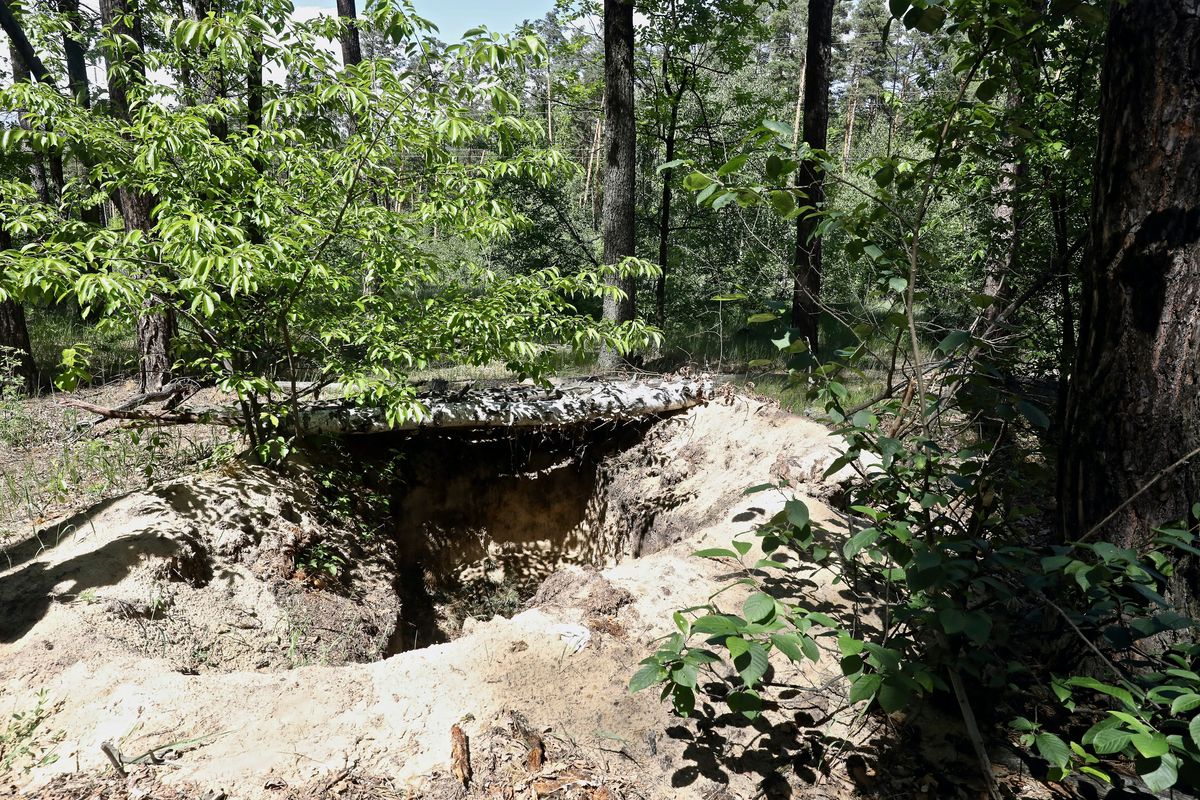Ukrainian journalist executed ‘In Cold Blood’ by Russian soldiers, Reporters Without Borders says

Two lifeless bodies found on the ground in a forest about 12 miles north of Kyiv, Ukraine, one with a bullet wound in the chest and two in the head.
A charred Ford Maverick belonging to one of the men.
Discarded food packaging and plastic cutlery of Russian soldiers discovered nearby in an area that had been occupied by Russian forces.
These are just a few of the clues pieced together by the press freedom group Reporters Without Borders in an investigation of the killings of Maks Levin, a Ukrainian photojournalist, and his friend, Oleksiy Chernyshov, a soldier. While the circumstances remain murky, the organization reported Wednesday that the evidence suggested the journalist had been executed “in cold blood.”
The men’s bodies were discovered April 1 in a forest near the village of Moshchun, near Kyiv, which came under heavy bombardment in early March when Russian forces tried to take the Ukrainian capital. The men, according to organization, were killed March 13.
“Analysis of the photos of the crime scene, the observations made on the spot and the material evidence recovered clearly point to an execution that may have been preceded by interrogation or even acts of torture,” said Christophe Deloire, secretary-general of Reporters Without Borders, which published a 16-page report on the killings.
“We owe them the truth,” he said.
Reporters Without Borders, based in Paris, sent two investigators to Ukraine to look into the deaths. The group said the evidence suggested the men had been killed after Levin went to retrieve a drone he had lost March 10 in the forest near Moshchun, while trying to get footage of Russia’s military.
The group said Levin abandoned his first attempt to find his drone after coming under Russian fire. But, it said, he returned three days later to continue his search in a hostile area. It said he had been accompanied by Chernyshov, who was carrying an AK-74 rifle and wearing a military uniform.
“The terrain was hostile but Levin was determined to recover his drone at all costs because he was convinced that the last images it had taken were very important,” the report said, adding that the last image Levin had shared with a friend showed Russian armored vehicles near houses in a village.
Levin, who had covered the conflict between Ukraine and Russian-backed separatists in the eastern Donbas region, was the father of four sons. Reporters Without Borders said Levin, 40, was an experienced freelance journalist who had worked often with LB.ua, a Ukrainian news site, and Reuters.
The group stressed that Levin was not a member of the military. But it said photos of his body showed a blue armband similar to those worn by Ukrainian soldiers, a marker that it said front-line journalists sometimes wore to identify themselves to Ukrainian military as “friendlies.”
It added that Levin may have provided images taken by his drone, including images showing Russian positions, to Ukrainian forces.
Investigators found Chernyshov’s identity papers at the scene of the killings, and also “located a bullet that had probably struck Levin,” the group said.
According to a statement by Ukrainian prosecutors, Levin was killed by two shots fired by Russian soldiers using small arms.
Reporters Without Borders said it had handed over its evidence to Ukrainian judicial authorities. By its count, eight journalists, including Levin, have been killed since the invasion began.